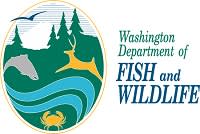Washington DFW Releases New Rules for Steelhead Fishing on Tucannon River Starting Sept. 1

Starting Sept. 1, a new fishing rule designed to protect critically low levels of wild steelhead and reduce the number of hatchery fish on the spawning grounds will take effect on the Tucannon River.
An emergency rule approved today by the Washington Department of Fish and Wildlife (WDFW) will:
- Close the river to steelhead fishing upstream from Marengo at Turner Road Bridge and define the downstream boundary of the fishery where the Tucannon flows into the Snake River.
- Reduce the daily catch limit from three to two hatchery steelhead in the area open to fishing.
- Require anglers to keep any hatchery steelhead they intercept, and stop fishing once they catch their daily limit of two hatchery steelhead or two trout.
Glen Mendel, WDFW southeast district fish biologist, said returns of natural origin steelhead to the Tucannon River are falling short of meeting conservation goals, which could potentially affect the department’s ability to open future recreational fisheries. Anglers can help by retaining every hatchery steelhead they catch, he said.
“Stray hatchery steelhead that primarily enter the Tucannon in late summer and fall need to be removed to prevent them from spawning naturally,” Mendel said. “At the same time, we need to provide a refuge area above Marengo for early returning wild steelhead, and close the fishery before March when most of the wild steelhead return to the Tucannon River.”
In addition, barbless hooks are required when fishing for steelhead. Anglers must release any steelhead not marked as a hatchery fish by a clipped adipose fin and a healed scar at the location of the missing fin.
Anglers cannot remove any steelhead from the water unless it is retained as part of the daily catch limit. Chinook and coho salmon, as well as bull trout, are also present in the Tucannon River during the steelhead fishery and must be released immediately if caught, Mendel said.
The new fishing rule defines the mouth of the Tucannon River as waters “lying south of a line of sight from an orange diamond-shaped sign attached to the Hwy. 261 guard rail (northwest of the Tucannon River and adjacent to the highway rest area turn off), running southeast across to the eastern, un-submerged shoreline of the river (point of land spit).”
The large embayment between the eastern shoreline of the Tucannon River and the rock bluff to the east along the south shore of the Snake River is considered part of the Snake River, Mendel said.
Anglers fishing for salmon or steelhead on the Tucannon River and all other tributaries and mainstem of the Snake River are required to have the Columbia River Salmon/Steelhead Endorsement, which helps pay for monitoring the fisheries. Anglers should check the fishing regulation pamphlet for all details.

